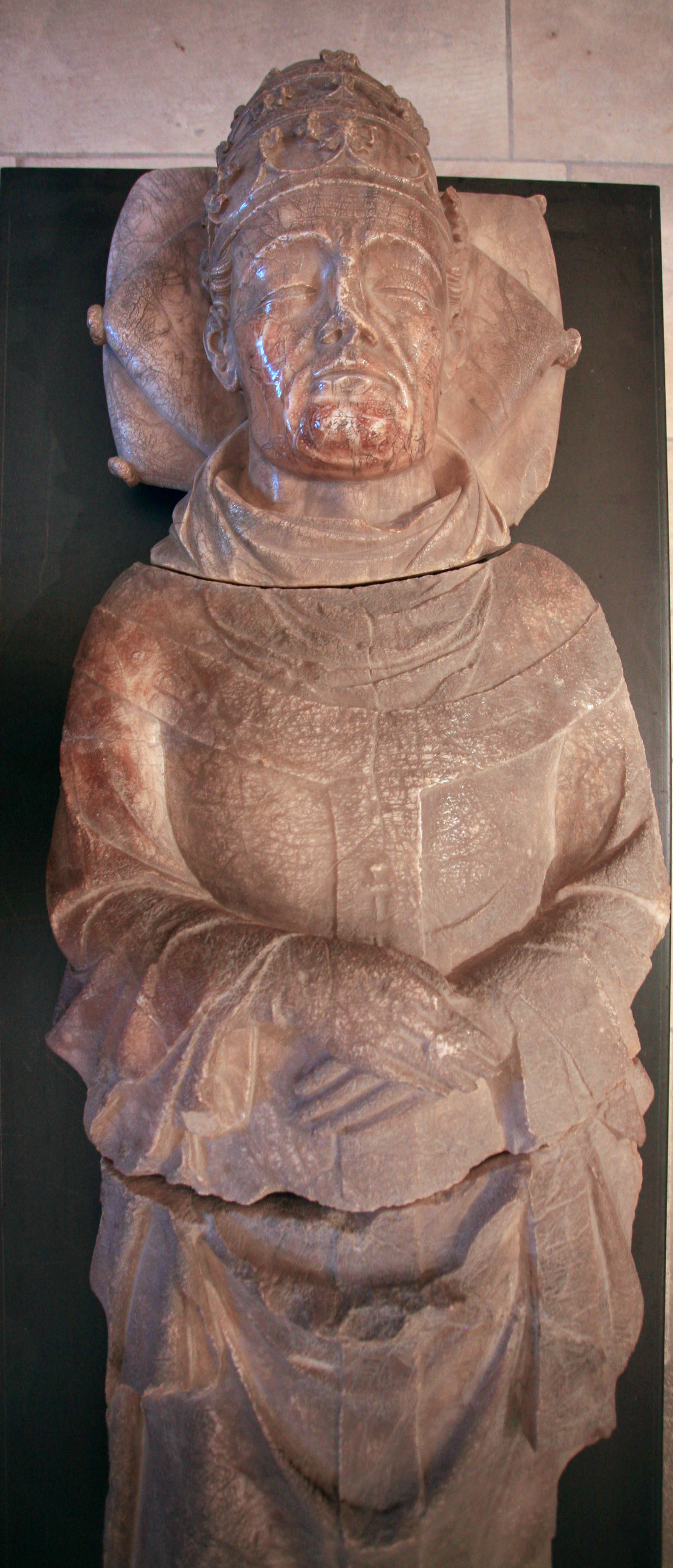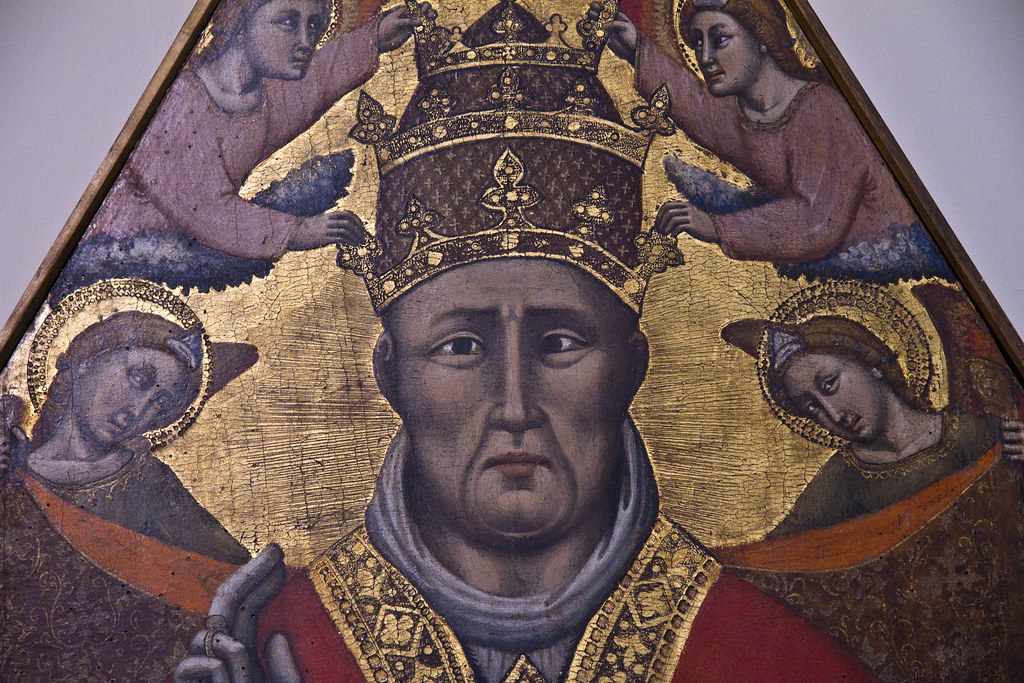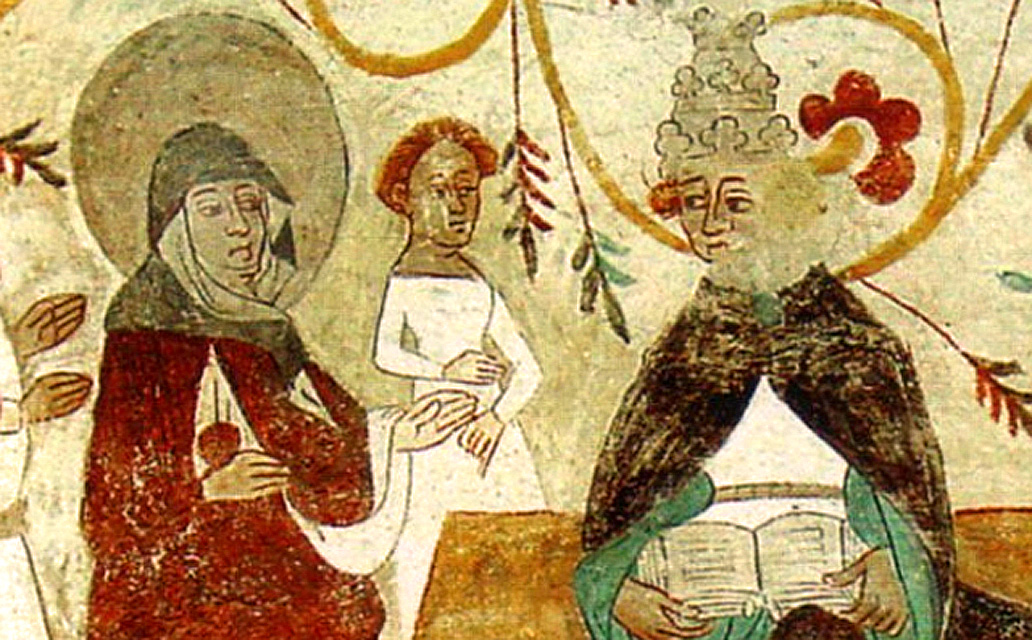December 19th is the feast day of Bl. Urban V, who was Pope from 1362 until his death on this day in 1370. John Dillon has once again posted about him on the Medieval Religion discussion group.
The nobly born Guillaume de Grimoard was a well educated Benedictine who made his profession at Saint-Victor in Marseille and who became abbot first of Saint-Germain at Auxerre and later of Saint-Victor. Though not a cardinal, he had been a Papal legate in Italy several times in the decade before his election to the Papacy in 1362. Taking the name Urban, he cut the rate of tithes in half, supported students through bursaries and the foundation of colleges, and sponsored many building projects, especially in his native Lozère, where he funded continued work on the recently begun but already fire-damaged cathedral of Mende, and in Rome. Many of the latter's churches were in great disrepair and the basilica of St. John in the Lateran had to be largely rebuilt after succumbing to a fire in 1360.
In 1367 he fulfilled a previously announced intention by changing his residence from Avignon to Rome. On 1 March 1368 Urban's preparations to say Mass in the Papal chapel (the Sancta Sanctorum) of the Lateran basilica led to the discovery there of the putative heads (cranial fragments) of Sts. Peter and Paul, which latter he then had placed in new reliquaries; on 15 April 1370 these were enshrined in a newly built ciborium over the basilica's high altar. Urban commemorated this happy event, so thematically significant for his renewal of the Roman Papacy, on at least one of his seals; reference to it would become standard in his Italian iconography.
The move to Rome was motivated in part by a desire on Urban's part to effect a reunion with the Greek church and by his perception that Rome, rather than Avignon, was a better stage from which to promote the crusade against the Turks that he had proclaimed in 1363. The latter was not a success, while the Greek policy resulted in the personal conversion, in Rome, of the Emperor John V but not in any greater Eastern adherence to Latin Christianity. Moreover, outbreaks of plague and violence in the city and armed struggles with condottieri elsewhere in Italy gradually soured Urban on the idea of ruling from Rome. Disappointing many Italians and also St. Birgitta of Sweden, he returned to Avignon in early September of 1370. Urban died on December 19th of the same year. He was buried in Avignon; two years later his remains were moved to the abbey church of Saint-Victor in Marseille.
His cult was immediate and initially widespread. The Kings of France and Denmark promoted Urban's cause and a canonization inquest recorded in 1382 produced a number of miracles. Ultimately, though, his candidacy became an unfulfilled project of the Avignon papacy, stalling out in the conflicts of the Great Schism. Pius IX beatified him in 1870.
A few visuals from Urban V's pontificate:
A Papal
bulla bearing the images of St. Peter (at right) and St. Paul (at left):
http://tinyurl.com/yendt2x
A
bolognino (coin of the Papal state) issued by Urban V:
http://tinyurl.com/4mff7x
A gold florin issued by Urban V:
http://tinyurl.com/53jd6h
The ciborium in St. John Lateran, sculpted by Giovanni di Stefano and erected in 1370:
http://flickr.com/photos/annoysius/2937878704/sizes/l/
http://flickr.com/photos/annoysius/2937030761/sizes/l/
Giovanni di Bartolo's reliquaries (1370) of Sts. Peter and Paul in the ciborium:
https://www.flickr.com/photos/brunello2412/5885876874/
Some period-pertinent images of Bl. Urban V:
a) as depicted (twice) on the engraved arms of a later fourteenth-century reliquary cross of Bohemian manufacture (c. 1370) in the treasury of the cathedral of St. Vitus in Prague:
b) as depicted in a later fourteenth-century copy, probably from Bohemia, of the
Vaticinia de summis pontificibus (?early 1370s; St. Gallen, Kantonsbibliothek, Vadianische Sammlung, VadSlg Ms. 342, p. 13):
http://www.e-codices.unifr.ch/de/vad/0342/13
c) as portrayed in his later fourteenth-century gisant (early 1370s) in the Musée du Petit Palais in Avignon:
d) as depicted (holding bust-length portraits of Sts. Peter and Paul) by Simone dei Crocifissi (Simone de Filippo) in a later fourteenth-century panel painting (c. 1375) in the Pinacoteca nazionale in Bologna:
Detail view:
e) as depicted in a pen-and-ink drawing in a later fourteenth-century historical miscellany (Aix-en-Provence, Bibliothèque Paul-Arbaud, MO 63, fol. 70v):
f) as depicted (with two cardinals; going by ship toward Rome) in a pen-and-ink drawing
in margine in a later fourteenth-century historical miscellany (Avignon, Bibliothèque-Médiathèque Municipale Ceccano, ms. 1348, fol. 96v):
Mis-en-page:
http://tinyurl.com/28n7awl
g) as depicted (holding a paten bearing miniature busts of St. Peter and St. Paul) in a remounted late fourteenth-century fresco in the chiesa di Santa Maria della Croce (a.k.a. chiesa di Casaranello) at Casarano (LE) in Apulia:
h) as depicted (at far left, enthroned; second from left, King Peter I of Cyprus; at centre, Florimont de Lesparre making his apologies to the king) in a late fourteenth-century copy of Guillaume de Machaut's
La prise d'Alexandrie (c. 1380-1395; Paris, BnF, ms. Français 9221, fol. 235v):
http://gallica.bnf.fr/ark:/12148/btv1b6000795k/f494.item.zoom
i) as depicted (with two cardinals; going by ship from Rome to Avignon) in a late fourteenth-century copy of Bernard Guidonis'
Fleurs des chroniques (after 1384; Besançon, Bibliothèques municipales, ms. 677, fol. 102v):
j) as depicted (holding a tablet with bust-length portraits of Sts. Peter and Paul) in a probably late fourteenth-century fresco in the chiesa di San Francesco in Terni:
k) as depicted (holding a diptych with bust-length portraits of Sts. Peter and Paul) in a badly degraded probably late fourteenth-century fresco in the chiesa di Sant'Eligio Maggiore in Naples:
Detail view of the diptych of SS Peter and Paul:
http://farm6.static.flickr.com/5506/14455126726_906d5fbbdd.jpg
l) as depicted (holding a chalice containing miniature heads of Sts. Peter and Paul) in the late fourteenth- or early fifteenth-century frescoes of the rupestrian chiesa / cripta di Santa Croce ai Lagnoni in Andria (BT) in Apulia:
m) as depicted in an earlier fifteenth-century copy from Köln of the
Vaticinia de summis pontificibus (c. 1401-1425; Paris, BnF, ms. Latin 10834, fol. 5v):
n) as depicted (holding a book surmounted by miniature busts of St. Peter and St. Paul) in an early fifteenth-century panel painting (c. 1410), seemingly of Italian origin, in the chapelle Saint-Privat in Mende's cathédrale Notre-Dame-et-Saint-Privat:
o) as depicted in an earlier fifteenth-century copy from northern Italy of the
Vaticinia de summis pontificibus (c. 1410-1415; Kremsmünster, Stiftsbibliothek, Hs. CC Cim. 6, fol. 7r):
p) as depicted in an earlier fifteenth-century copy from Florence of the
Vaticinia de summis pontificibus (c. 1426-1450; London, BL, MS Harley 1340, fol. 7r):
http://www.bl.uk/catalogues/illuminatedmanuscripts/ILLUMINBig.ASP?size=big&IllID=51685
q) as depicted in an earlier fifteenth-century copy from Umbria of the
Vaticinia de summis pontificibus (before 1431; Paris, BnF, ms. Nouvelle acquisition latine 2130, fol. 8r):
r) as depicted (at right; at left, St. Birgitta of Sweden) by Johannes Rosenrod in an earlier fifteenth-century fresco (1437) in Tensta kyrka, Tensta (Uppsala län):















